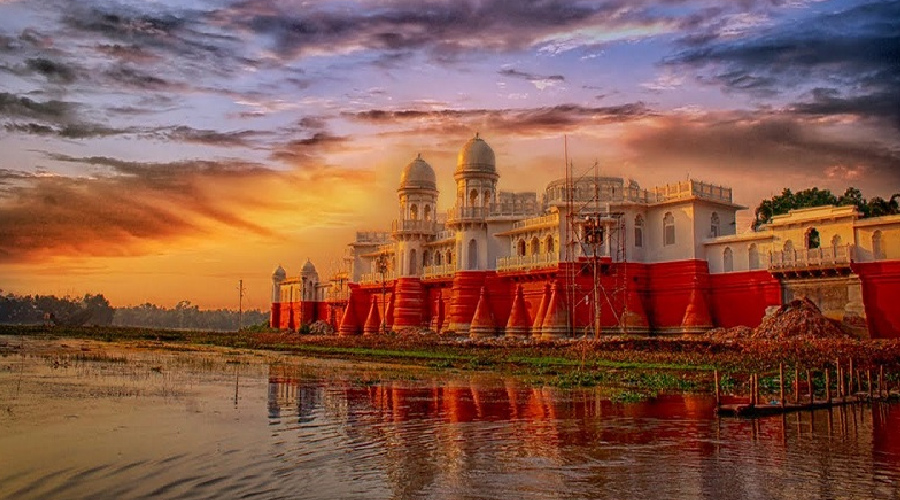Located in the northeastern corner of India, Tripura is a small yet enchanting state that remains largely undiscovered by mainstream tourism. Tripura provides a distinctive range of experiences for the discerning traveler with its magnificent landscapes, rich history, and lively traditions. In this article, you can go through the natural wonders, ancient archaeological sites, and cultural riches that make Tripura a hidden gem worth exploring in India's northeastern region.
Natural Wonders of Tripura
Jampui Hills: A Scenic Paradise
Jampui Hills, often called the 'Orange Bowl of India,' is a picturesque hill station along the Tripura-Mizoram border. Orange orchards dot the lush hills, which provide magnificent views of the nearby valleys and enclaves. As you trek through the lush landscape, you'll come across quaint tribal settlements and colorful orchids, making Jampui Hills an idyllic destination for nature lovers and adventure enthusiasts.
Dumboor Lake: A Picturesque Retreat
Dumboor Lake, located in the Amarpur sub-division of Gomati district, is a sprawling water body covering an area of 41 square kilometres.
You can enjoy beautiful picnics, boating, and birdwatching at the lake because of its tranquil ambience and alluring beauty. Surrounded by lush green hills, Dumboor Lake is also home to the Sipahijala Wildlife Sanctuary, where you can spot various species of birds, deer, and primates.
Sepahijala Wildlife Sanctuary: Exploring Diverse Flora and Fauna
Sprawled across 18.53 square kilometers, the Sepahijala Wildlife Sanctuary is a haven for nature enthusiasts and wildlife lovers.
More than 150 different bird species, the endangered spectacled monkey and clouded leopards are among the many different plants and animals that call the sanctuary home. For those looking to fully experience Tripura's natural beauty, Sepahijala Wildlife Sanctuary is a must-visit location because of its diverse wildlife and lush vegetation.
Neermahal Palace: India's Only Water Palace
Situated amidst the tranquil waters of Lake Rudrasagar, Neermahal Palace is a mesmerizing architectural marvel that reflects the fusion of Hindu and Muslim architectural styles. Built-in 1930 by Maharaja Bir Bikram Kishore Manikya, the palace served as the royal summer retreat. Today, Neermahal Palace is a popular tourist attraction, offering visitors the opportunity to explore its ornate interiors and scenic surroundings by boat.
Ancient History and Archaeological Sites in Tripura
Ujjayanta Palace: A Regal Heritage Site
Ujjayanta Palace is a magnificent example of Indo-Saracenic architecture and is situated in the centre of Agartala, the capital of Tripura. A visit to Ujjayanta Palace offers a glimpse into the opulent past of Tripura's royal lineage.
Unakoti: A Marvel of Rock Carvings and Sculptures
An amazing collection of bas-relief sculptures, paintings, and rock carvings can be seen in Unakoti, which served as a popular pilgrimage site between the seventh and ninth centuries. The site, which literally means "one less than a crore" (ten million), is said to have been carved by the gods themselves. The most iconic sculpture at Unakoti is the colossal Shiva head, surrounded by various other deities and mythological figures. This remarkable archaeological site provides a fascinating insight into the region's ancient history and a breathtaking backdrop for photography enthusiasts.
Pilak: A Treasure Trove of Ancient Artifacts and Ruins
Situated in the Santirbazar sub-division of South Tripura, Pilak is an archaeological hotspot that boasts a rich collection of relics, statues, and terracotta plaques dating back to the 8th-12th centuries. A visit to Pilak allows you to delve into the historical significance and artistic mastery of Tripura's ancient civilizations.
Matabari Temple Complex: A Sacred Hindu Pilgrimage Site
The Matabari Temple Complex, located in Udaipur, is one of northeastern India's most revered Hindu pilgrimage sites. Dedicated to the goddess Tripura Sundari, the temple is said to be one of the 51 Shakti Peethas, making it an essential centre for Shakti worship. With its stunning architecture and serene ambience, the Matabari Temple Complex attracts thousands of devotees and tourists each year, seeking blessings and exploring its sacred grounds.
Cultural Riches and Traditions
Tribal Communities: Insights into the Region's Indigenous People
There are numerous indigenous tribes in Tripura, each with its own practices, beliefs, and life methods. Some of the prominent tribes in the region include the Tripuri, Jamatia, and Reang communities. By engaging with local communities through responsible and ethical tourism practices, visitors can better understand the region's rich cultural tapestry and witness traditional arts, crafts, and dance forms.
Tripura's Traditional Handloom and Handicrafts
The skilled artisans of Tripura are renowned for their exquisite handloom and handicraft creations, which include intricate cane and bamboo products, vibrant textiles, and beautiful tribal jewelry. A visit to local markets and craft centers offers an opportunity to witness these traditional crafts up close and even purchase some unique souvenirs to take home.
Festivals and Celebrations: Exploring Local Customs and Rituals
Tripura's vibrant festivals and celebrations provide a window into the region's rich cultural heritage and traditions. Some of the most popular festivals include Kharchi Puja, Garia Puja, and Durga Puja. Colorful processions, traditional music, dance performances, and a variety of delicious local cuisine characterize these celebrations.
Visitors can immerse themselves in the community's culture and get a true sense of Tripura by taking part in these celebrations.
Tripuri Cuisine: Savoring the Flavors of the Region
Tripuri cuisine is a delightful mix of indigenous flavors and ingredients, reflecting the state's diverse tribal heritage. Traditional dishes like Mui Borok, Gudok, and Bangui are prepared using locally sourced produce, herbs, and spices.
Tripura's unique culinary offerings provide the opportunity to experience these distinctive tastes and better understand the area's diverse cuisine traditions.
Off-the-Beaten-Path Attractions
Baramura Eco Park: A Haven for Nature Enthusiasts
Located near Agartala, Baramura Eco Park is a lesser-known attraction that offers a serene retreat for nature lovers.
At the park, you can get relief from the hectic pace of city life and spend a peaceful day among nature. It has rich greenery, walking routes, and a diversity of plants.
Kamaleswari Temple: A Hidden Gem of Religious Significance
A lesser-known holy place devoted to the goddess Kamaleswari is the Kamaleswari Temple, which is located in the village of Kamalpur. The temple is a hidden gem that offers travelers a distinctive spiritual experience because of its historic architecture and serene surroundings. A visit to Kamaleswari Temple offers a chance to connect with the region's religious history and explore a hidden gem in Tripura's landscape.
Chabimura: A Remarkable Collection of Rock Carvings Along the Gomati River Chabimura, located on the banks of the Gomati River, is an offbeat destination that features a stunning collection of ancient rock carvings. Accessible only by boat, Chabimura offers an unforgettable journey through Tripura's rich artistic heritage and provides a unique opportunity to witness these incredible carvings in their natural setting.
Planning Your Trip to Tripura
Best Time to Visit
The ideal time to visit Tripura is between October and March. At this time you can enjoy beautiful weather is pleasant and clear skies.
The temperature is comfortable for tourism and outdoor activities throughout these months, ranging from 10°C to 25°C. From June to September, the monsoon season can bring severe rain and may restrict access to some attractions.
Accommodation Options: Hotels, Guesthouses, and Home stays
Several lodging options are available in Tripura, from high-end hotels and resorts to cheap guesthouses and home stays. Some popular choices include the Ginger Hotel in Agartala, the Sagarmahal Tourist Lodge in Melaghar, and the Neermahal Tourist Lodge near Neermahal Palace. Living with a local family in a homestay provides an authentic experience of Tripuri hospitality and culture.
Transportation within Tripura: Air, Rail, and Road Connectivity
Tripura is well connected by air, rail, and road, making it relatively easy to access from other parts of India. Maharaja Bir Bikram Airport in Agartala is the main airport, with regular flights to major Indian cities such as Kolkata, Guwahati, and Delhi.
Tripura, with its captivating natural beauty, ancient historical sites, and vibrant cultural heritage, is a hidden gem waiting to be discovered in India's northeastern region.
You'll make priceless memories and get a fresh appreciation for this less well-known Indian state by stepping off the beaten path and indulging yourself in Tripura's distinctive experiences.
So, pack your bags and get ready to enjoy an unforgettable journey through Tripura's natural wonders, ancient history, and cultural riches.





